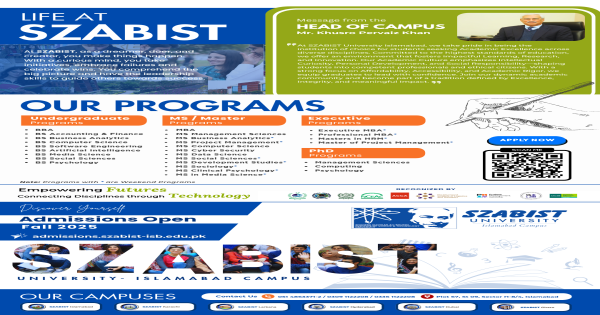This was an uphill task for me to converge the studies of nutrition and management of calves on same page because even a single research article comprising both the topics did not come under my observation.
So mostly I did my study on this topic from the book “animal Husbandry” by GC Banerge, and the brochures displayed and published by department of livestock Management University of agriculture Faisalabad. However some other references were also tackled to personify this article.
What to do at birth:
- Immediately after the birth of a normal calf clean the mouth and nostrils of any mucous to facilitate respiration.
- If the calf is not breathing normally or faces any difficulty perform artificial respiration by alternately applying and releasing pressure on the rib cage of the calf.
- Breathing can be stimulated by inserting the handle of a small, clean spoon about two inches up the nostrils of the calf and rotating it to stimulate the nerves.
- Use the fingers if a spoon is not available .
- Avoid using a stick and take care not to injure the nostrils during this process.
- Disinfect the umbilical cord with any antiseptic solution like tincture of iodine.
- Dry off the calf with a clean cloth/jute sack, and let the mother lick the calf to further clean and dry it .This stimulates its body circulation.
Colostrum:
Feed that calf the colostrum or first milk within the first hour and a half. This provides immunity or resistance against prevailing diseases. Colostrum is also important in providing
- Energy and
- Cleaning the intestines of meconium, the mucous in the intestines at birth
- Antibodies are best absorbed up to 36 hours after birth
- However, colostrum feeding should be continued for three to four days
- Thereafter, milk from either the mother or from other animals can be used for feeding the calves
- If an animal is transported to a new location during late pregnancy where certain diseases are different from those of the area in which it remained for the major part of its pregnancy, its colostrum may not provide immunity against such diseases.
Colostrum is fed
- At 10% of the body weight in 24 hours
- The normal buffalo calf weighs between 30 and 40 kg
- Exotic cattle like Holstein, Frisian, and their crosses also weigh 30-40 kg
- Sahiwal, Red Sindhi, and other local breeds weigh between 20 and 30 kg
- The colostrum should be given in two feedings
- The first 60 %
- And the second 40 %
- Colostrum of cohort animals who remained in that area could be used beneficially
- In developed countries, prepared antibodies against all the common diseases are available in dry form, and are fed to calves at birth
- Overfeeding of colostrum causes diarrhea, which may predispose the calf to other diseases
- Overfeeding can be checked only by milking the animal and hand feeding the calf using a bottle with nipple or force feeding with a stomach tube or esophageal bag
Housing and management of calves
- Following care is essential with regard to calf pen:
- Calves will not keep well on a damp & dirty stall. Respiratory diseases like Pneumonia and other illness due to infection are common under such conditions
- Pen must be provide all the sunlight & good ventilation to keep floor dry, with plenty of shade in summer and protection from cold draft in winter
- Calf stall must be well lighted and floor should not be slippery.
- Calves should be kept separate until they are 6 to 8 weeks old.
- After 6 to 8 weeks, calves may be housed in groups according to age viz. 2 to 4 months, 4 to 6 and above 6 months groups.
Purpose
Marking calves is necessary for keeping proper records, proper feeding, better care and management
Method
- Calves can be numbered by several methods viz. tottooing. Branding, notching, tagging, etc.
- In case of tottooing, inside of ear is cleaned and sterilized using spirit and imprints are made with tattooing forceps.
- Tattoo ink is filled in the imprints. The marks are quite clear and permanent.
- In buffalo calves notching method of marking may be followed. A Danish system of ear notching for marking is much in use.
Castration of Bull Calves
Purpose
- To make animals more docile.
- To produce more desirable edible meat.
- To prevent uncontrolled breeding.
Age of Castration.
Two to three months.
Methods
- Open castration (Operation method with knife).
- Bloodless methods:
- Use of rubber ring.
- Use of Burdizzo‘s Emasculating
- Burdizzo's emasculator is quite safe. It is placed an inch above the testes to crush the cords, and blood vessels
- Dehorning of calves
Purpose
- Safe to handle
- Need less floor space.
- Brings uniformity in appearance.
- Prevents horn cancer.
Age
- 2-3 weeks
Methods
- Electrical
- Chemical
- Mechanical
- A safe & quick method is to use electrical dehorned at temp. 538 0C for then seconds on horn bud.
- Under chemical potash (NaOH) may be rubbed on horn buds
- In grown up calves & mature animals mechanical method of dehorning by use of clippers or dehorning saw also is used.
TEACHING THE CALF TO DRINK MILK
- Hand Feeding.
- Calf should go without food for first few hours to develop an appetite.
- Then calf should be taken to one comer of the pen and insert two fingers of right hand into the mouth, while holding milk in left hand at convenient height for the calf.
- While calf suckles the fingers, the muzzle is gradually pressed down into milk pan. This way calf will learn to drink milk soon.
- Pail Feeding.
- A pail containing milk for calf is placed at the convenient height.
- Pail has a nipple attached to a side near' the bottom through which the calf can suckle milk.
- Removal of extra teat:
- An ideal udder with four well placed teats appears to be balanced.
- Extra teat if any should be clipped with a pair of sterilized scissors, and a disinfectant such a tincture of iodine must be applied.
- Systems of feeding young calves:
- Generally, three systems of feeding calves up to three months of age are followed, and depending upon the price of milk, the farmer decides in favor of the most economical system. These are:
- Whole milk feeding
- Feeding a weighed quantity of whole milk after milking the animal
- Directly suckling the mother
- Foster mother
- Limited whole milk
- Milk replacers
Whole milk
Optimum growth of the calf is obtained if it is fed on whole milk according to recommended allowances. This can be done by feeding weighed quantities of milk. Ff, however, the utensils and equipment used for feeding are not properly cleaned, this can become a source of infection, affecting the health and normal growth of the calf. Direct suckling of the dam is probably satisfying to both mother and calf and is more hy¬gienic than other systems. In this system, however, the farmer is unable to assess if the calf is under- or overfed.
The foster mother system resembles the direct suckling system, allowing a number of calves (3-5) to suckle. The practice is preferred to save labor, and is almost as good as direct suckling. The dairy farmer, however, must ensure that the foster mother has no preference for any one of the multiple sucklings. Generally, whole milk feeding is practiced for three months, provided the price of milk remains within permissible limits.
Limited whole milk.
- When the price of whole milk is high, the dairy farmer is tempted to let the calf have only rather limited quantities.
- Alterna¬tives are not available in Pakistan; hence the farmer resorts to underfeeding. Under such circumstances, if the calf is fed on concentrates and its con¬sumption is about 1/2 kg per day, and then whole milk feeding can be successfully stopped.
- The calf can be easily weaned at 1 ½ months if it starts consuming about 1/2-I kg concentrate per day.
- Skim milk or powdered skim milk, or dried whey if available, can be-fed effectively along with limited quantities of whole milk.
- This will maintain the normal growth rate.
Milk replacers
- Milk replacers resemble milk in composition and digestibility.
- The feeding of milk replacers is advisable when the price of whole milk is high.
- The replacer can be formulated at about 80-85% of the price of whole milk.
- The major ingredients are obtained from milk and milk products like skim milk powder and whey.
- Replacers are prepared in powder form and are mixed with water at the ratio of 1:9 for feeding. The following principles should be considered when milk replacers are fed.
- Feeding the replacer should be economical.
- A replacer should be palatable.
- Mixing the replacer should be easy.
- Ingredients of the replacer should be easily available.
- A replacer should be more than 95% digestible.
- When the milk replacer system is practiced, initially the calves do not look as shiny as those on whole milk.
- However, with age the distinction diminishes. Feeding of milk replacers is not commonly practiced in Pakistan; however, with the gradual growth of the dairy industry and availability of ingredients at competitive prices, the use of replacers may gain momentum.
- When they are a week old,
- Calves should be offered clean water and good-quality forage like alfalfa or be seemed along with calf starter, a con¬centrate mixture having about 80% TDN (total digestible nutrients).
- The practice should be continued until the calf is three months old-Sudden weaning of calves is not recommended.
- If the calves are to be weaned at the age of 12 weeks, the amount of milk in the feeding programmer should be increased up to eight weeks of age according to weight gain.
- Thereafter, gradually decrease the amount of milk by about 25% each week so that at the end of 12th week the calf receives no milk. Decrease in milk feeding must be accompanied by simultaneous increase in concentrate feeding, so that sustained growth and gain in body weight is maintained.
- Milk replacer is a constituted feed for dairy calves.
- Milk can also be substituted with milk replacer to make calf rising economical.
Feeding Grains
- After the four month of age, calf can utilize grain mixture.
- The amount of grain need for calf will depend upon the quantity of roughages.
- The grain mixture for calf must contain
- 16 to 18 percent protein.
Feeding Hay
- Clean, green and leafy legume or mixed hay forms the good fodder for young calves.
- Hay can be offered to young calves after two weeks of age on free choice basis.
- They may start with handful of hay but will eat more and more with increase in age.
- Green legumes preferably mixed with other fodder are also good.
Pasturing Calves
- Pasture especially a mixture of legume with other grasses provides an excellent feed for growing calves.
- They may be permitted to graze after 6 month of age.
- A separate pasture for calves is suggested
Silage for Calves
- A limited quantity of silage may be offered to calves preferably after 4 months of age.
- Care should be taken to feed only about 3 to 4 kg good quantity silage along with mineral supplements.
REFERENCES
Butler, J. E. 1983. Bovine immunoglobulins: an augmented review.
Vet. Immunol. Immunopathol. 4:43.
Afaq, M., M. Ashfaque, M. Akhtar and B. Hayat. 1992. Colostral
immunoglobulins against Rota and Corona viruses in
crossbred cows using Streptavidin Biotin peroxidase enzyme
linked immunosorbantassay. Pakistan J. Agric. Sci. 29:227-229.
Ahmad, F. and M. A. Jabbar. 2000. Comparative efficiency of calf
starter and conventional ration in buffalo suckling calves.
Annual report, Livestock Production Research Institute,
Bahadurnagar, Okara, Pakistan 21:89.
Ahmad, M. 1988. Milk fed to buffalo and Sahiwal calves from
birth to weaning at L.E.S, Bahadurnagar. Annual report,
Livestock Production Research Institute, Bahadurnagar, Okara, Pakistan 10:6-12.
Bach, A., A. Gimenez, J. L. Juaristi and J. Ahedo. 2007. Effects of
physical form of a starter for dairy replacement calves on feed
intake and performance. J. Dairy Sci. 90:3028-3033.
Barrington, G. M., T. B. McFadden, M. T. Huyler and T. E. Besser.
2001. Regulation of colostrogenesis in cattle. Livest. Prod. Sci.
70:95-104.
Bellows, R. A., D. A. Patterson, P. J. Burfening and D. A. Phelps.
1987. Occurrence of neonatal and postnatal mortality in range
beef cattle. II. Factors contributing to calf death. Theriogenol.
28:573-586.
salman sarwer gujjar
Top Contributors
Related Articles
SZABIST University Islamabad – A Premier Destination for Higher Education in Pakistan
- Ilmkidunya
- 03/Jul/2025




.gif)







































